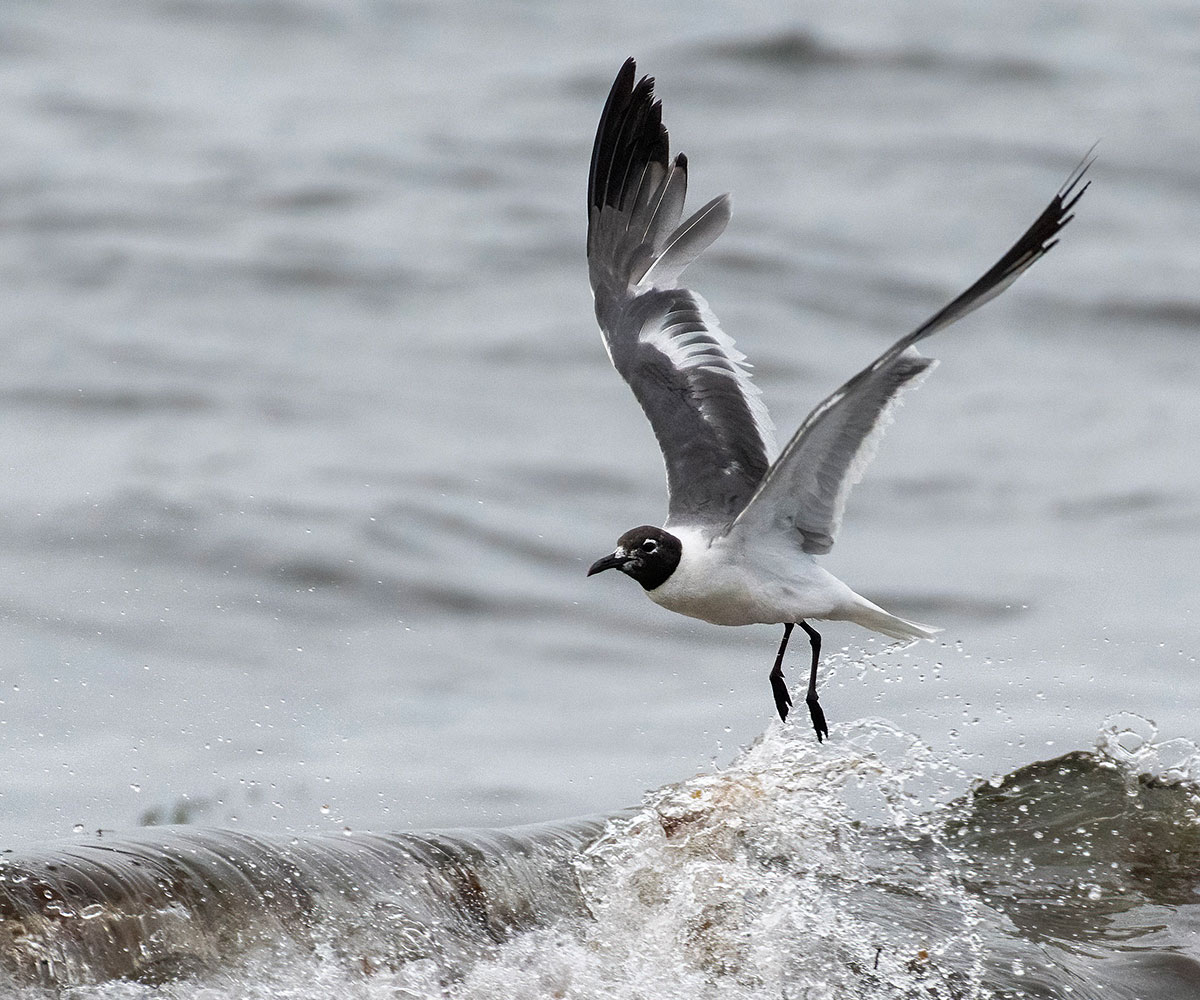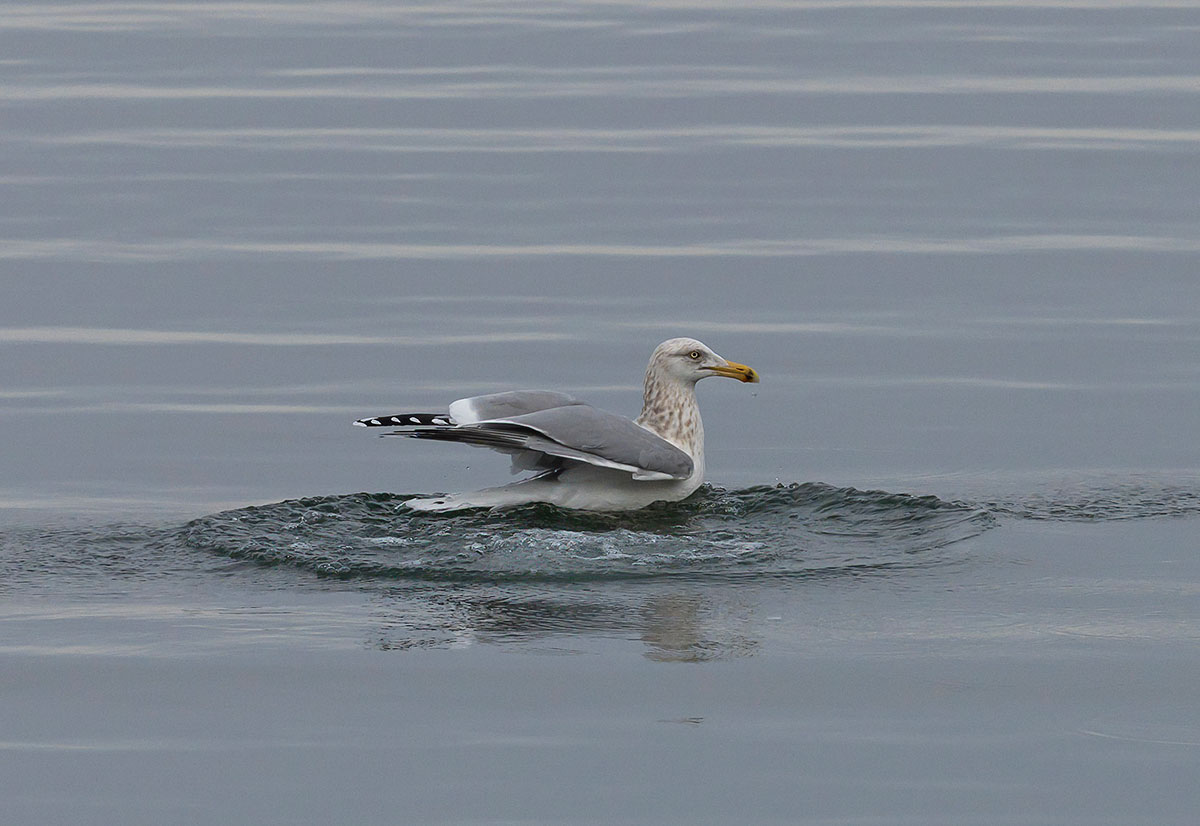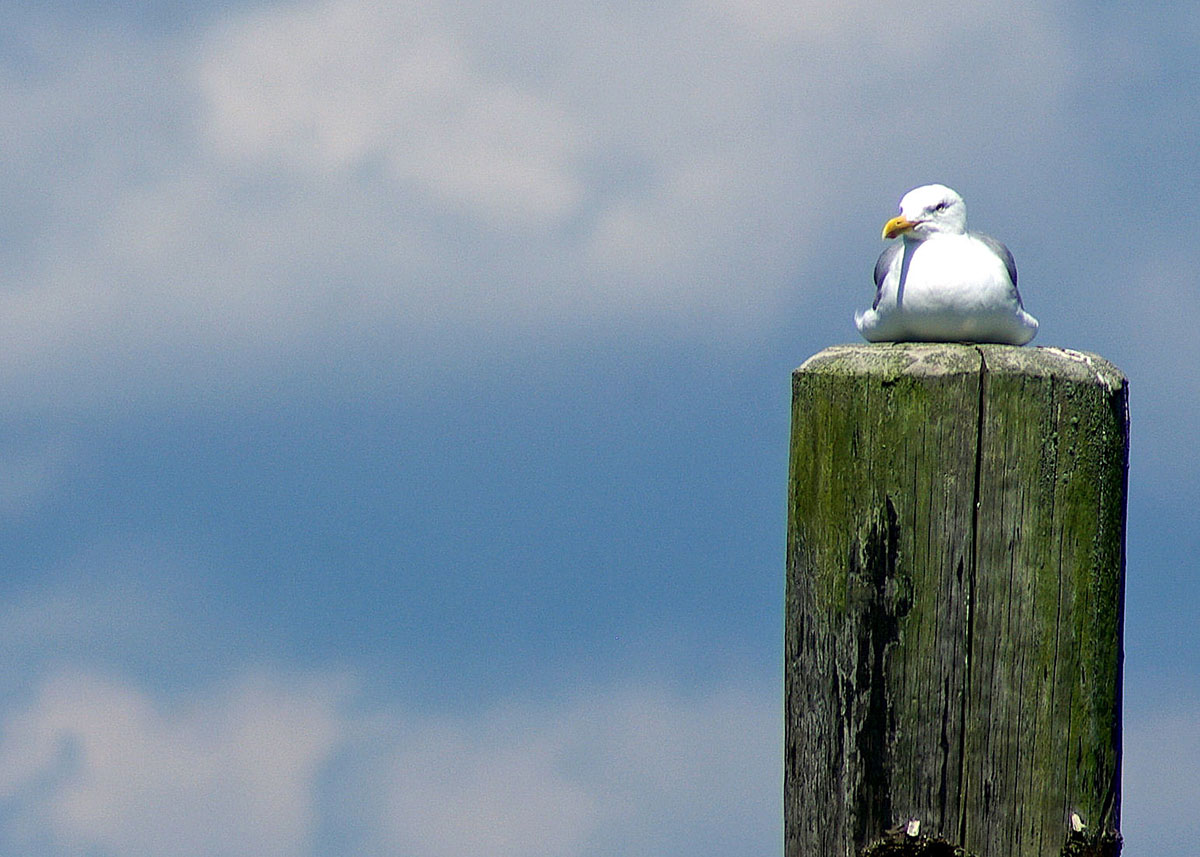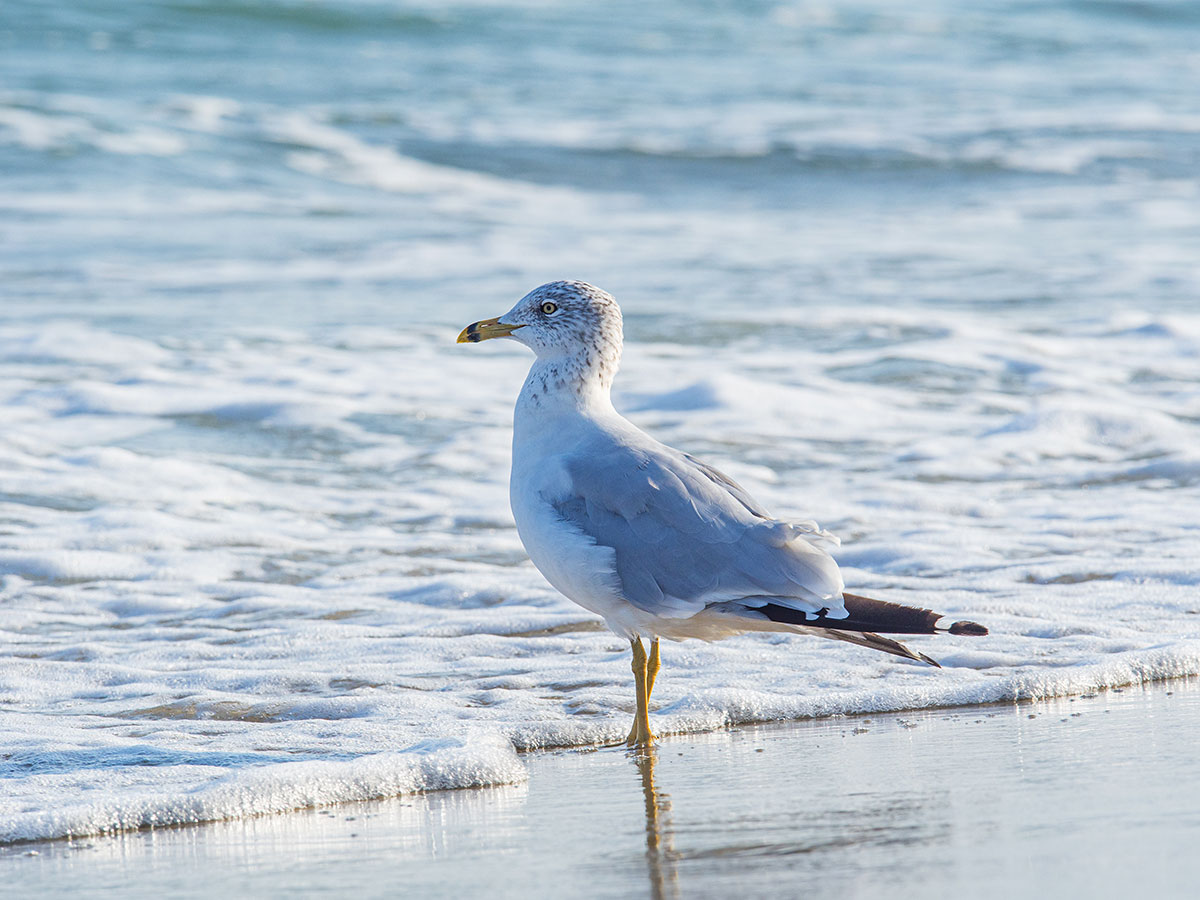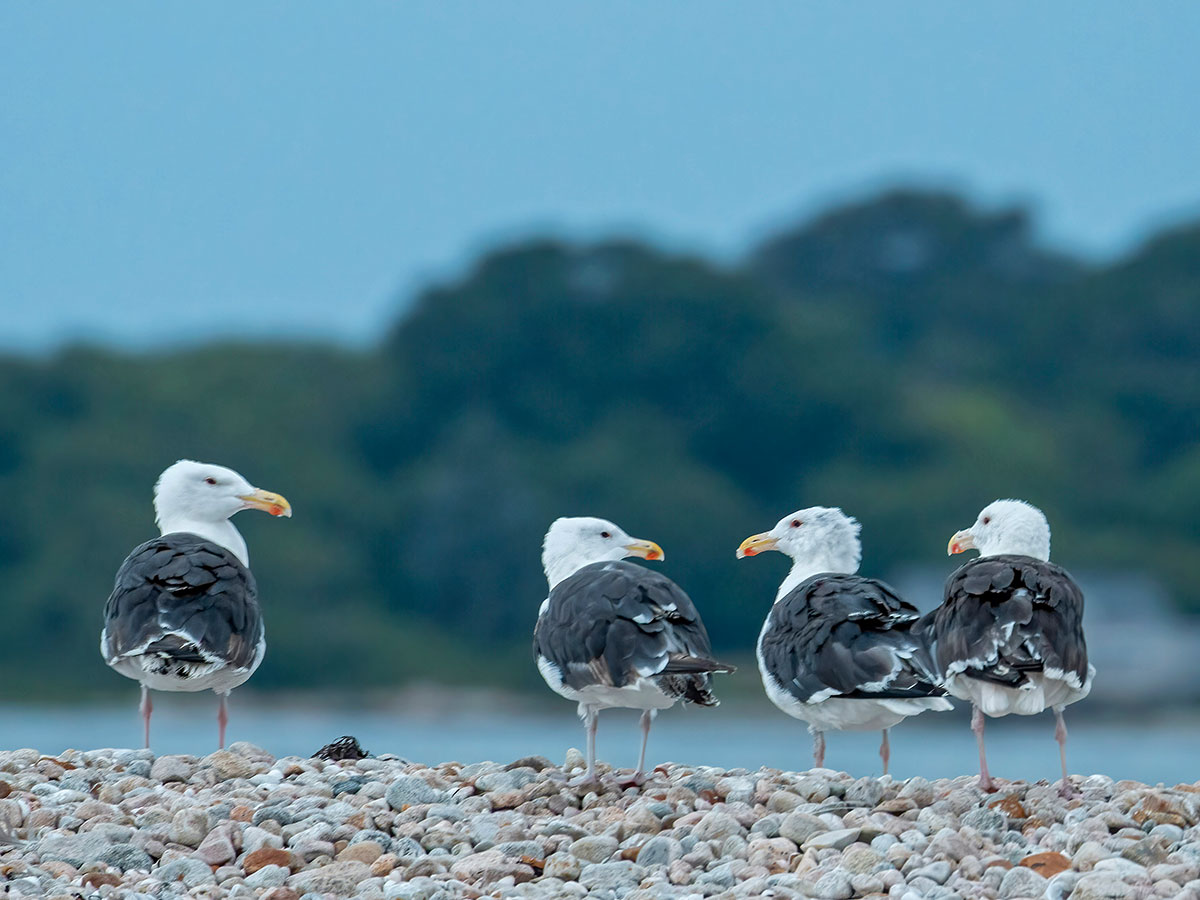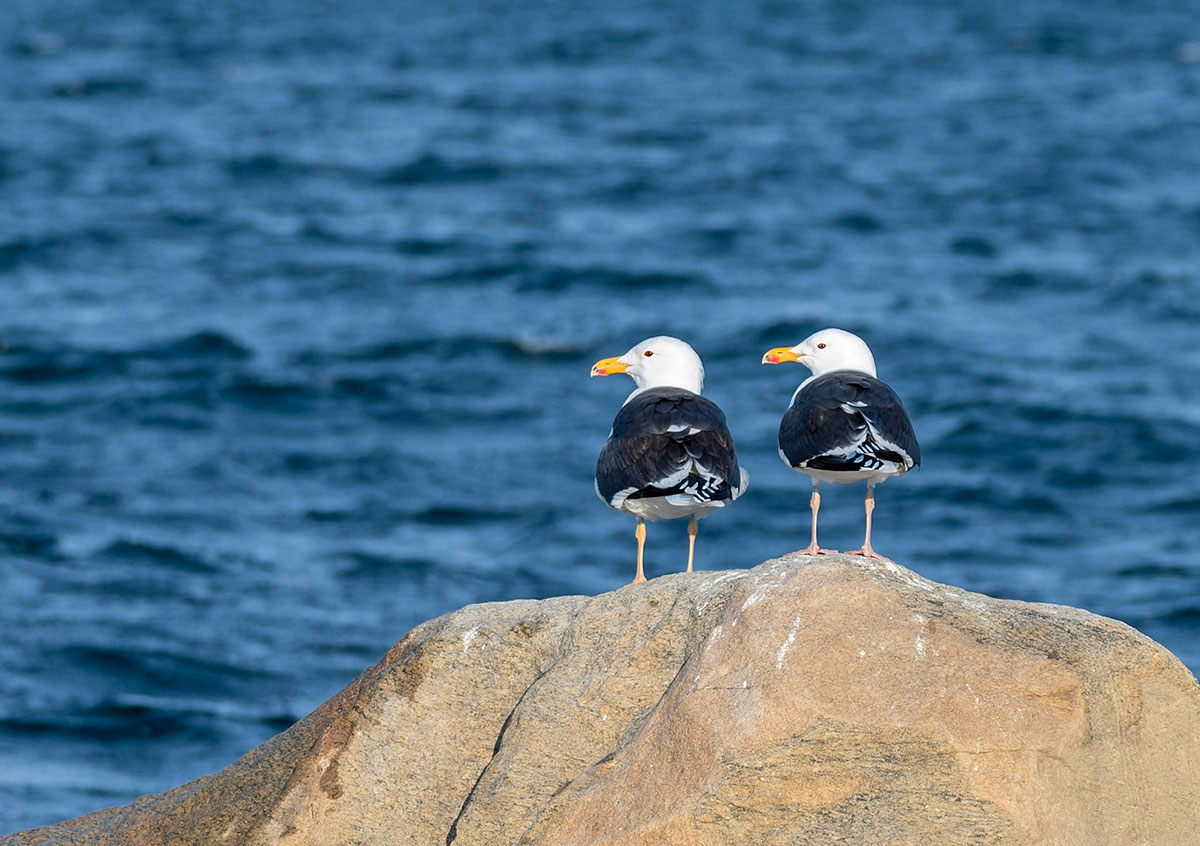ANNUAL EXHIBITION 2021
GULLS
Laughing Gull, breeding adult, South Beach
Photograph by Todd McCormack
The aptly-named Laughing Gull has a strident call familiar to all who live along the Atlantic seaboard. Breeding adult Laughing Gulls have a distinctive black head. Note also the narrow white crescent around the eyes.
Opportunistic scavengers to their core, you will find Laughing Gulls wherever garbage congregates. Their more wholesome diet includes crabs, mollusks, fish, shellfish, bird eggs, as well as insects.
Herring Gull, nonbreeding adult, West Harbor
Photograph by Todd McCormack
Note the tan streaking along the neck that indicates this Herring Gull is nonbreeding. The Herring Gull shares a predilection for garbage scavenging with the Laughing Gull and other gulls. They are similarly omniverous, opportunistic foragers.
“This large gull has a pale gray back, black-tipped wings, a white head, neck, breast, tail and underparts. The bill is yellow with a red spot near the tip; legs are pink.” Quote from whatbird.com.
Four Great Black-backed Gulls, Flat Hammock
Photograph by Todd McCormack
The largest gull in the world. the Great Black-backed Gull has a stout, bulky body with “broad wings, a thick neck and a heavy, slightly bulbous bill.” It is often characterized as “domineering.” “aggressive,” “piratical,” and/or “ruthless.” The Cornell Lab of Ornithology describes them as “the king of the Atlantic waterfront.” However, their popularity with their fellow bird subjects is next to nil as they “harry other seabirds to steal their catches, and ruthlessly prey on smaller birds, eggs and chicks.” Quotes from Cornell Lab of Ornithology’s website, allaboutbirds.org.

